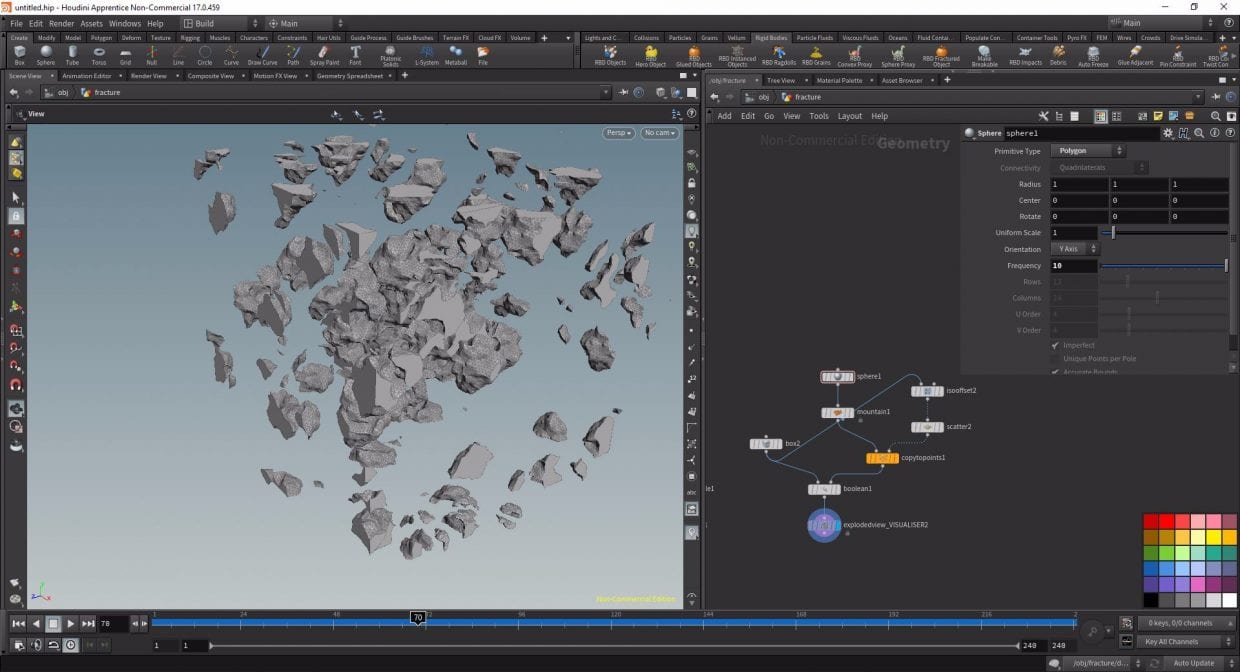There are two more methods of destruction available in Houdini that I will be looking at in this project referred to as “fracturing methods” – Voronoi and Booleon. Using another course from Pluralsight Architectural Destruction in Houdini led by Hermes Crespo I explored the capabilities of both of these methods of fracturing.
Voronoi
Voronoi fracturing was the standard method of fracturing RBDs in Houdini at the time of the course’s creation (January 2018) and does its job using points. The mathematics involved can be visualised by scattering points on a grid, I filled a grid with 200 points then applied a Voronoi Fracture. This calculated and drew lines across my grid based on a series of angle parameters but most significantly the distance from all the points on the grid, breaking up the grid into fractured polygons. These polygons are calculated by grouping together all points on the grid that are closer to one of the 200 seed points than any other. This method of fracturing can be controlled by painting objects black and white so points group in white areas meaning that only certain areas of an object will have little fractures, as displayed below.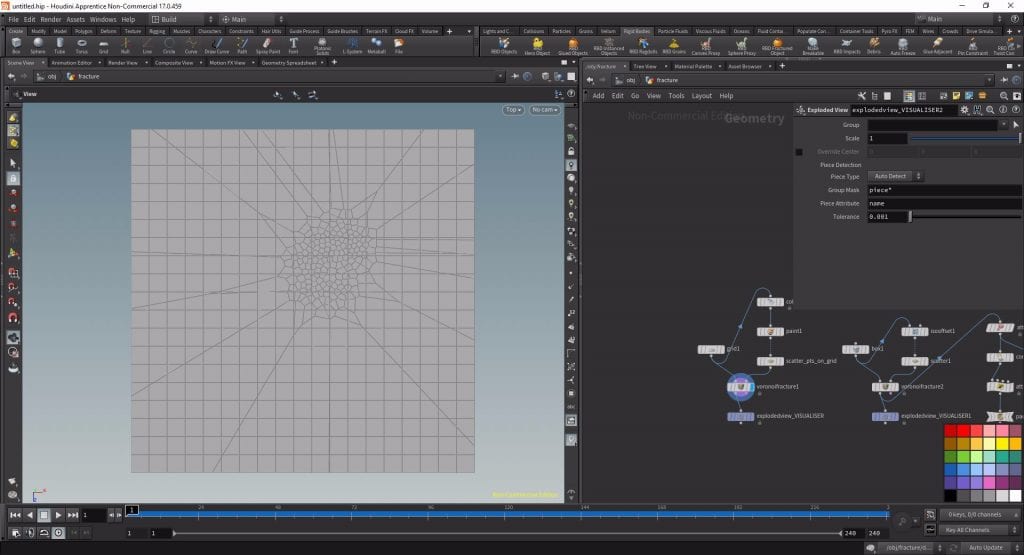
This can also be applied to 3D objects by turning a cube into a volume and then filling it with points. Here I have an exploded view of Voronoi fracturing on a cube: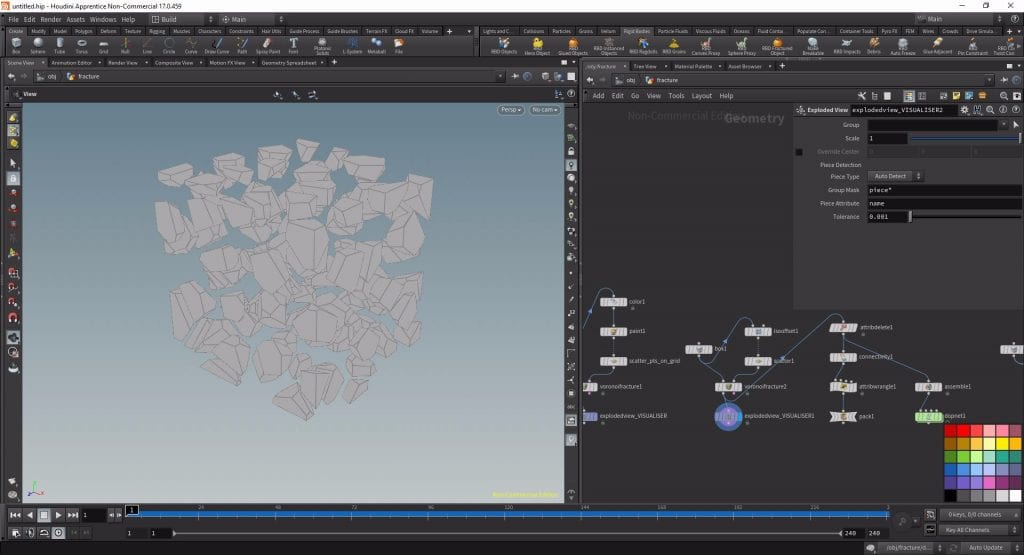
This can then be assembled into a packed object with the appropriate name attributes in order to shatter it as an RBD using a bullet solver in DOPs: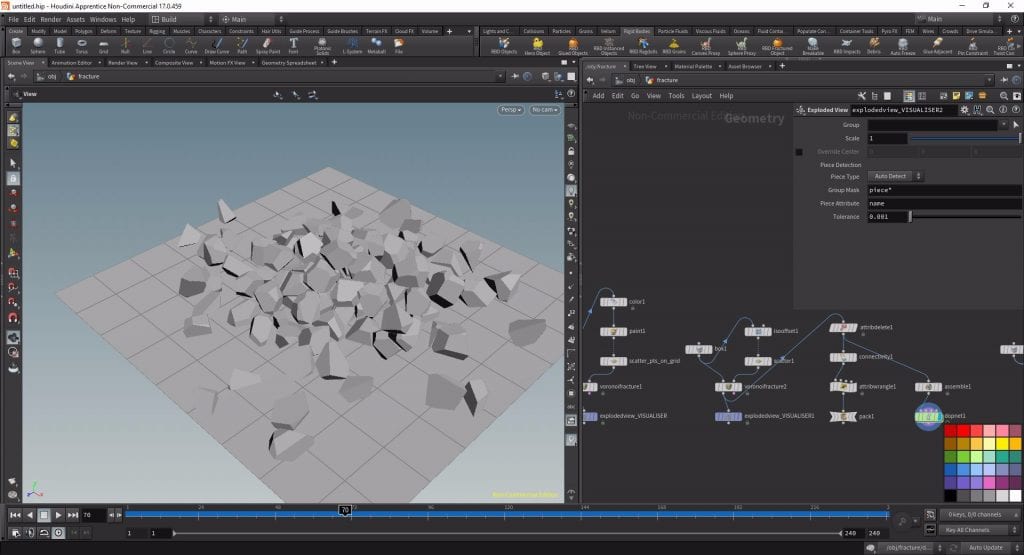
BOOLEAN
As I said, that was the standard way of fracturing until Houdini 16 came out in 2017, however in this update SideFX introduced another method of destruction called “Boolean”. This method does not use mathematics based on points like in Voronoi but instead allows you to “Shatter[ing] a solid model using cutting surfaces.” (SideFX, 2018). This means that you have your original piece of geometry – in this case a cube – then you can use a different piece of geometry to create points within the original piece to cut. I used a series of deformed spheres copied to various points within the cube that, when exploded, looks like this: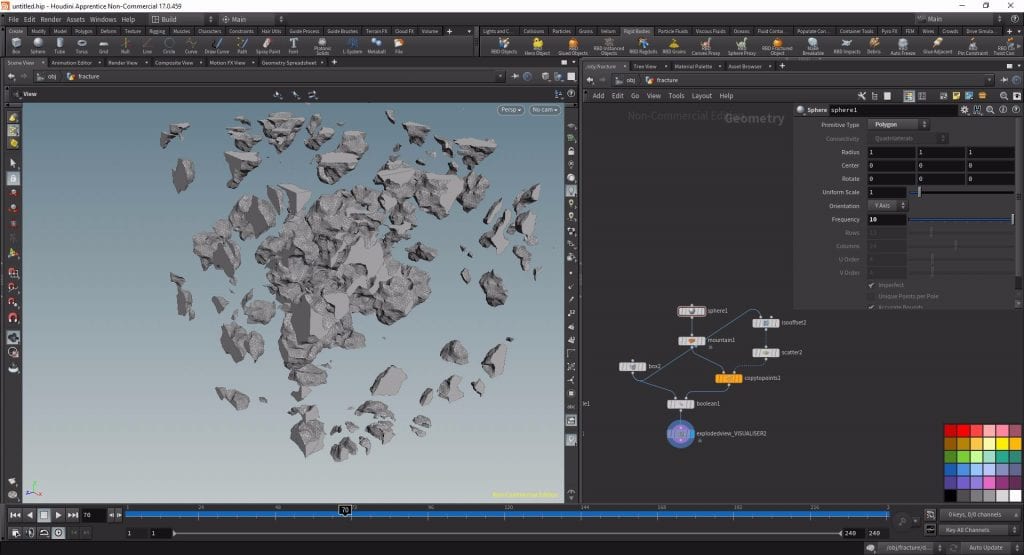
This fracture looks much more detailed and realistic as the edges aren’t all straight. The effect is the same as well when the DOP network is applied.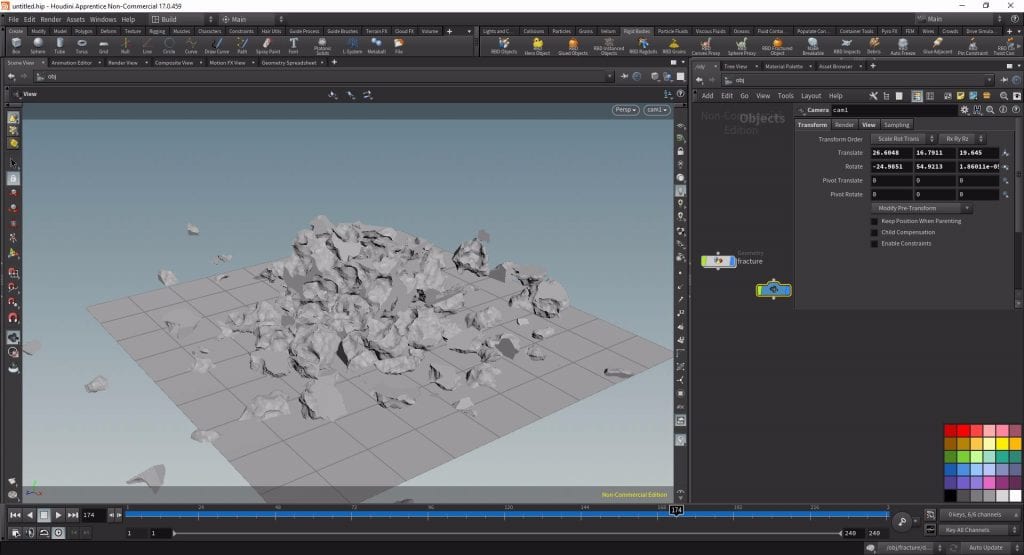
COMPARISON
I then compared the two by flip booking the both of them and noted down each of their strengths and weaknesses:
VORONOI
Strengths:
- Established within industry.
- Uses maths for fractures so less work required by person.
- Fast calculation speed.
Weaknesses:
- Very uniform when compared to Boolean
- Less room for creativity due to the mathematical determination of fracture points.
BOOLEAN
Strengths:
- Very realistic fractures, edges break off while main body holds together.
- Far easier to manipulate in terms of creativity.
- Much more detailed than Voronoi.
Weaknesses:
- Far slower calculation speeds.
- Only been around for just over a year.
- Takes longer to set up.
It appears they both have their time and place depending on the requirements of the scene. Personally I prefer the aesthetic appeal of the Boolean method however I will need to do further research into the logistics of it in order to determine wether it will be a viable fracturing method for my out shots.
Tutorial Video
Here is a video detailing how to create both a basic and more complex Voronoi Fracture:
References
- Pluralsight (2018) Architectural Destruction in Houdini. Available from: https://app.pluralsight.com/library/courses/houdini-architectural-destruction [accessed 11th February 2019].

